|
Boolean Algebra
In order to help the pilot land, a particular aircraft’s autopilot
is connected to a device with four sensors. These sensors indicate
whether each of the following is favourable: the fuel on board, the
wind conditions (taking into account the wind speed and direction),
the angle of descent, and the state of the landing gear.
Based on the outputs of the four sensors, an alarm may or may not
sound. If the fuel is low or the landing gear is not engaged, the
alarm should sound; if this is not the case, unfavourable wind conditions
might be compensated for by favourable angle of descent, in which
case the alarm should not sound; otherwise, the alarm should sound.
Use the legend: A for fuel, B for wind, C for
landing gear, D for angle of descent (with 0 indicating unfavourable),
and F for the alarm (with 0 indicating no alarm).
(a) Construct a truth table for the device .[3]
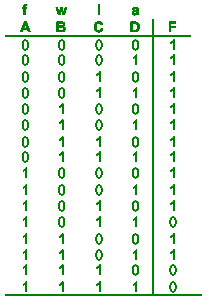
Guide: 1 mark for format, 2 mark for entries
deduct 1mark for each
mistake.
(b) Obtain the Boolean expression from the truth table where the sensor
does not
sound. [2]
F = AB’CD +ABCD’+ABCD
Guide: 2 marks, deduct 1 mark for each mistake.
(c) Simplify using K-map to obtain the SOP and POS expression [5]
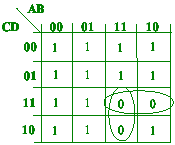
Product of Sum
= (A’ + C’ + D’)(A’ + B’ + C’)
(do not sound)
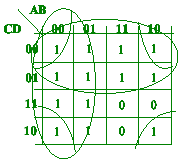
Sum Of Product
= A’ + C’ + B’D’
(sound)
Guide: 1 mark for Kmap format and entries, 2 mark POS expression,
2
marks for SOP
(d) Draw a properly labelled circuit diagram for the simplified expressions.
[4]
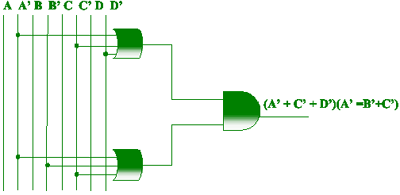
Product of Sum = (A’ + C’ +
D’)(A’ + B’ + C’)
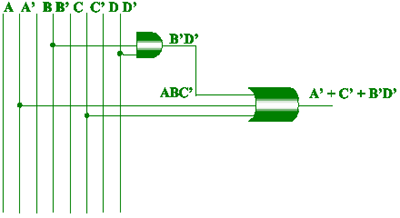
Sum Of Product = A’ + C’ + B’D’
Guide: max. 2 marks for each properly drawn circuit.
(e) Are your two circuits in part (iv) equivalent? [1]
Yes. (A simple yes/no answer suffices; no
explanation is necessary.
But check that they have given the correct answer for their two
circuits from part (d)).
|